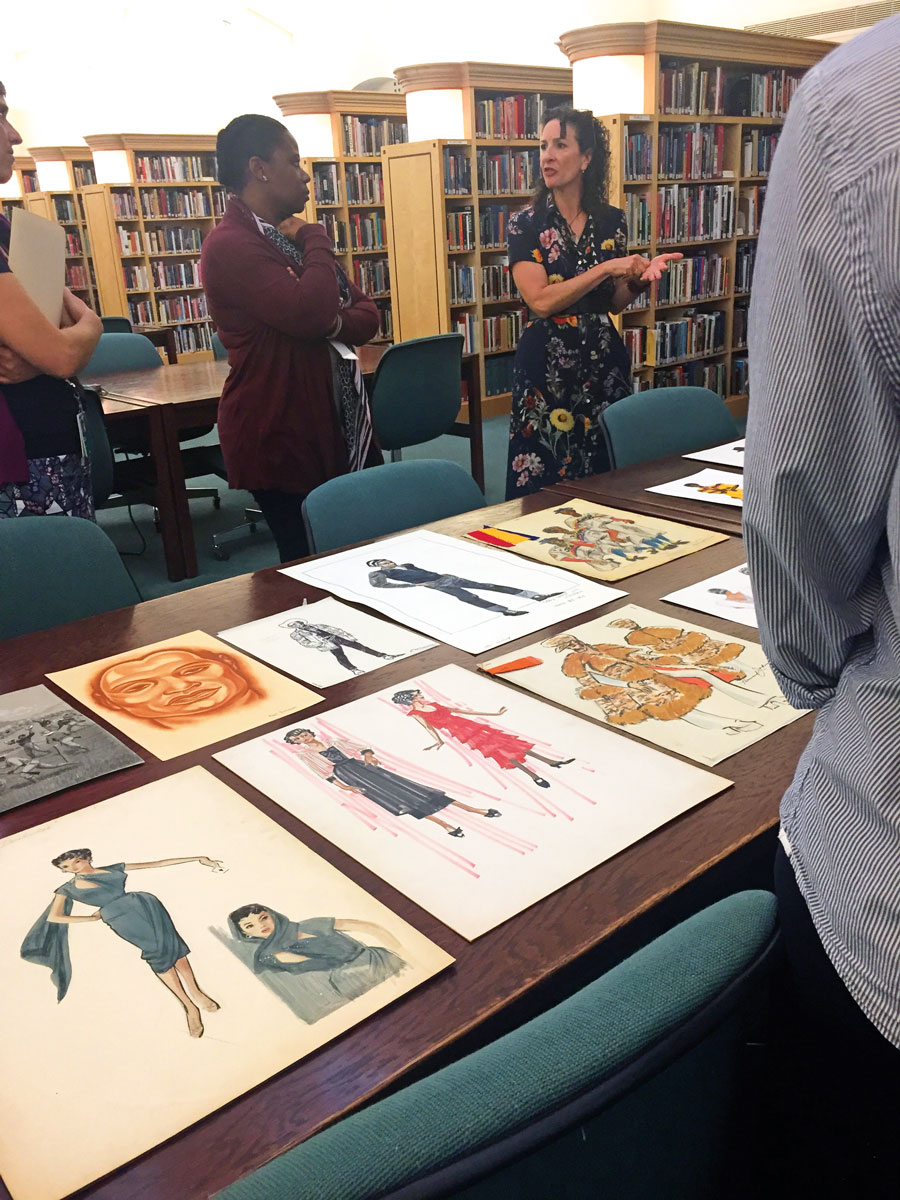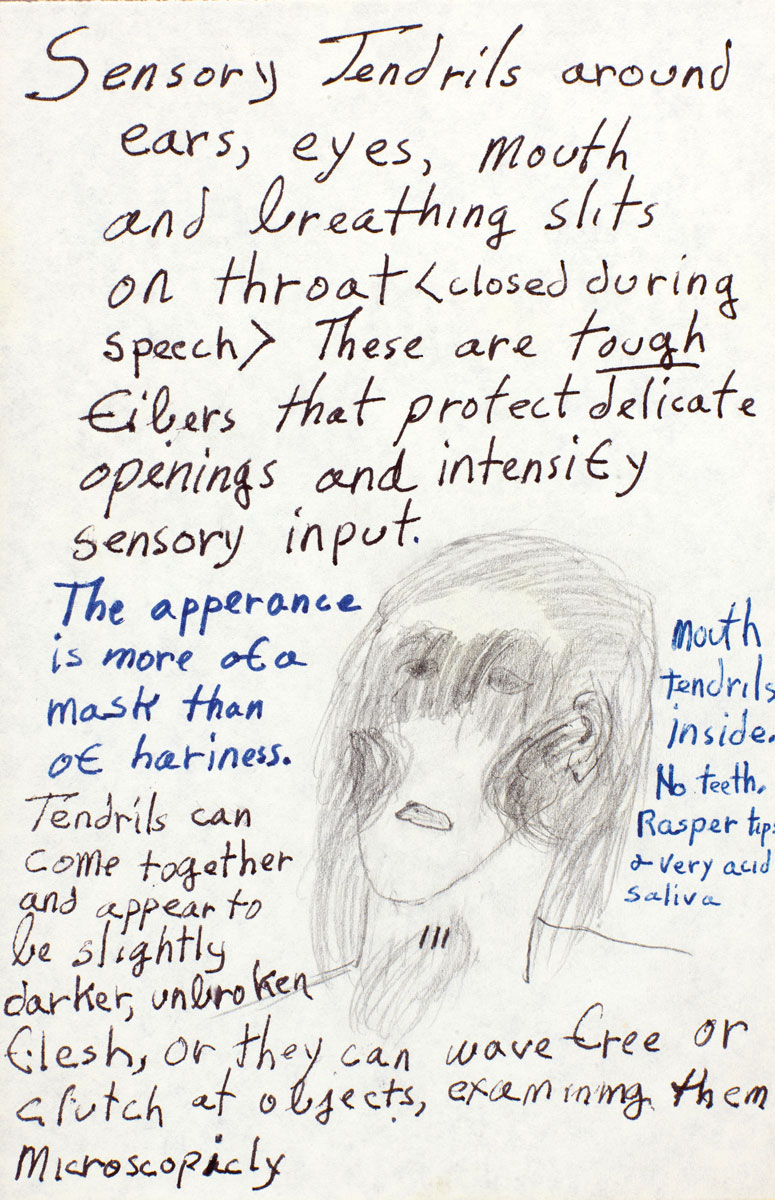Black L.A. Collections Confidential
Students of the California Rare Book School in Los Angeles explore historical collections of African Americans in the West By Tamar Evangelestia-Dougherty Tamar Evangelestia-Dougherty is an independent rare book and special collections consultant. Currently a faculty member of California Rare Book School, she teaches courses on African American primary resources.
For five days each summer, rare book aficionados from the far reaches of the world journey to the University of California at Los Angeles for their own West Coast bibliophilic interpretation of the artists’ colony Yaddo. The California Rare Book School, or CalRBS, provides continuing education to professionals involved in all aspects of the rare book community. With virtually the entire library and museum community of Los Angeles as its laboratory, the CalRBS faculty is encouraged to make extensive pedagogical use of local special collections.
Students learn through a combination of classroom instruction and field trips to institutions such as the Getty Library and the Los Angeles County Museum of Art. Courses are intensive and intimate, and subjects range from traditional instruction in “Rare Book Cataloging” and the “History of Typography” to courses that explore contemporary cultural themes and reflect California’s diverse ethnic tapestry.
One such course, “Developing and Administering African American Resources,” examines exceptional collections of black heritage and addresses their scarcity and perceived fragility within the context of both small and large cultural institutions. Dr. Susan M. Allen, director of CalRBS, said she felt that the course, a relatively new offering, was needed to draw awareness to important rare and hidden African American collections.
“Our students are as diverse as California,” explained Allen. As research populations become increasingly diverse, libraries and museums are aggressively focusing on building culturally inclusive collections. Conventional collection management approaches are not always applicable or appropriate when it comes to mediating socially charged collections that assist researchers in understanding and reconciling our nation’s troubled history of racial injustice and inequality.
In keeping with the CalRBS contemplative and “hands on” teaching philosophy, careful consideration is given to the course’s field trips, where students are asked to interpret and respond critically to materials and their surroundings. On one class day this past August, students examined rare books at the research library of the California African American Museum. The museum’s circa 1890 copy of Nelly Was A Lady evoked emotional responses from the students. The book presents lyrics written by American songwriter Stephen Foster, which unfold the fateful tale of “Nelly,” a “dark Ginny bride” and slave who was the first black woman in history to be reverentially deemed a “lady.”
The Margaret Herrick Library of the Academy of Motion Picture Arts and Sciences in Beverly Hills introduced the students to visually appealing collections surrounding African Americans in the film industry. Known more casually as the organization that awards the Oscars, the Academy boasts a world-renowned library, which documents the history of film as an art form. A selection of African American-related movie posters, costume designs, ephemera, and film correspondence were thoughtfully displayed for students to gather around. Provocative posters featuring Josephine Baker and blaxploitation film queen Pam Grier as “Coffy,” as well as costume drawings for Dorothy Dandridge in Carmen Jones, served as reminders of how far black females have come in film.
Several pieces of correspondence within the Academy’s collection highlighted the strong current of discrimination blacks have faced in Hollywood. One letter in particular addressed the “unacceptable exposure” of Lena Horne’s costume in the 1943 picture, Stormy Weather. Another, dated 1946, reprimanded a producer for his film short’s introduction of a pig using a “Negro accent.” The author wrote, “This is not only an insult to 13,000,000 Americans, but it is Fascist Propaganda in true Hitler style.”
The papers of African American science fiction writer Octavia E. Butler (1947-2006) are among the literary manuscript treasures at the Huntington Library, another off-site location for CalRBS coursework. Original manuscripts, photographs, personal correspondence, and handwritten notes depicting Butler’s odd yet endearing penchant for keeping time were all available to study. Fresh off a summer 2017 exhibition, Octavia E. Butler: Telling My Stories, Butler’s collection is enjoying a healthy dose of success. According to Natalie Russell, assistant curator of literary manuscripts at the Huntington, since its bequest to the library in 2008, the Butler collection has become the second most consulted by researchers.
Butler’s commercial legacy is flourishing there, too: souvenirs in the form of brooches and bookmarks of the author’s groundbreaking work, Kindred, are available for purchase in the Huntington’s gift shop.
However, despite the collection’s success and the Huntington’s laudable commitment to advancing its research potential and outreach, for some students its institutional placement represented a sense of loss to the black community. Butler, while a Californian and a paramount literary figure—both attributes that legitimately place her within the Huntington’s collecting scope—was also female and black. The juxtaposition of her papers within the context of the Huntington’s vast and historically significant literary collections of “Anglo-American” authors challenged students’ perceptions of who should and should not be keepers of African American heritage.
“My fear is that members of the black community and other communities of disenfranchised individuals will be unable to experience the empowerment that seeing themselves in the archival papers of Octavia Butler can produce because of the structural walls, both figuratively and actually, that unwelcome them at the Huntington Library,” remarked CalRBS student Krystal L. Tribbett.
Similar concerns were echoed by fellow students, who concluded that the Butler collection’s success within an institution that historically collects and preserves predominately white authors seemed secondary to the concern of the collection’s interpretation and accessibility to the black community. For CalRBS students, the aforementioned examples of black Los Angeles collections demonstrate the ability of relics from a not-so-distant past to inspire dialogue and confront individual perspectives. Their tangible historical relevancy and meaning are underpinned by their presented narrative of trauma and triumph which is African American culture. Such pedagogical engagements with rare materials serve to illustrate that collections are much more than mere static items on a shelf safely locked away to be occasionally admired.











